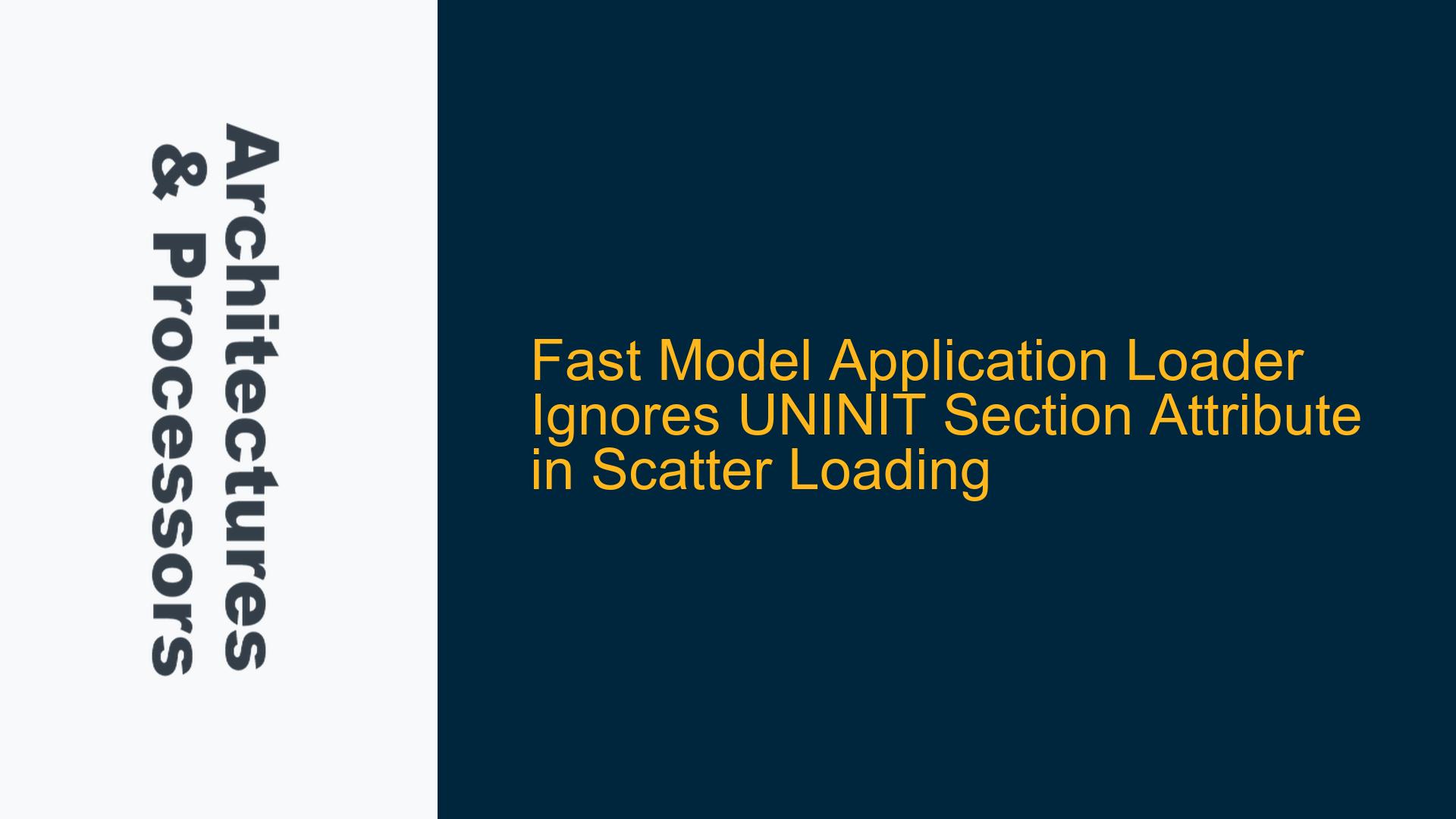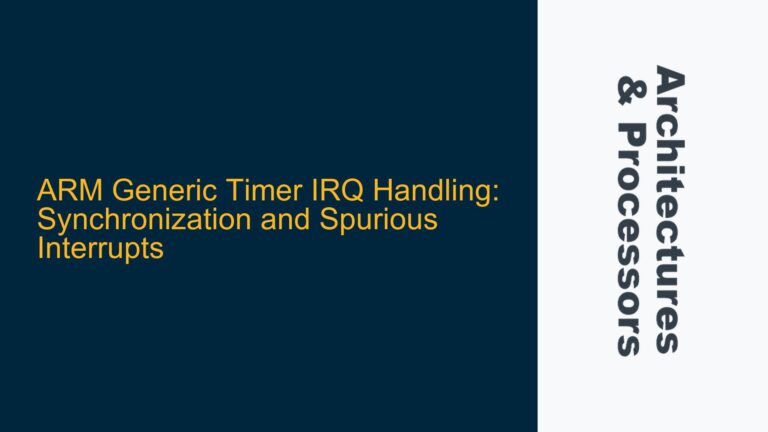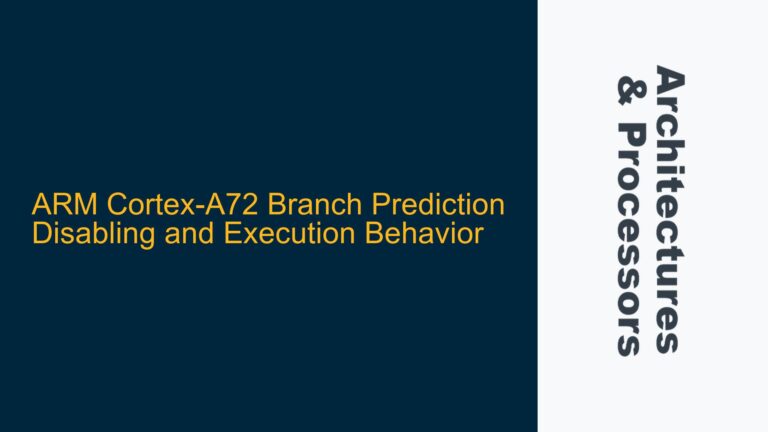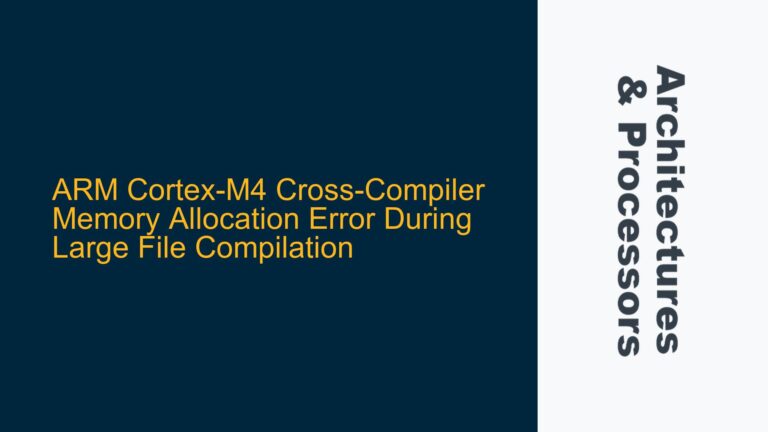Fast Model Application Loader Misinterprets UNINIT Section in Scatter Loading Script
The Fast Model application loader is designed to load executable files (.axf) into the simulation environment, interpreting the scatter loading script to map memory regions correctly. However, a critical issue arises when the loader encounters a memory region marked as UNINIT in the scatter loading script. The UNINIT attribute is intended to indicate that the memory region should not be initialized, preserving its contents as-is. This is particularly useful for large memory regions, such as RAM disks or buffers, where zeroing out the memory would be unnecessary and time-consuming.
In the reported scenario, the scatter loading script defines a memory region (ER_DRAM_RAMDISK) with the UNINIT attribute, specifying a 256MB block that should remain uninitialized. Despite this explicit directive, the Fast Model application loader appears to ignore the UNINIT attribute and proceeds to zero out the entire 256MB region. This behavior is inconsistent with the expected functionality and leads to significant performance degradation during the application loading phase, as the loader spends an excessive amount of time initializing a region that should remain untouched.
The discrepancy between the Fast Model application loader and the ARM Development Studio (DS) debugger further highlights the issue. When the same scatter loading script and executable are loaded via ARM DS, the UNINIT attribute is correctly honored, and the memory region is not zeroed out. This inconsistency suggests a potential bug or oversight in the Fast Model application loader’s handling of the UNINIT attribute.
Memory Region Initialization Logic and UNINIT Attribute Handling
The root cause of this issue lies in the Fast Model application loader’s memory region initialization logic. The loader is responsible for parsing the scatter loading script and setting up the memory regions as specified. When encountering a memory region marked as UNINIT, the loader should skip the initialization step, leaving the memory contents unchanged. However, the current implementation appears to bypass this check, treating all memory regions as requiring initialization.
One possible explanation for this behavior is that the Fast Model application loader’s initialization logic does not properly interpret the UNINIT attribute during the memory mapping process. This could be due to a missing or incorrect condition in the loader’s code that checks for the UNINIT attribute before proceeding with memory initialization. As a result, the loader defaults to zeroing out the memory region, regardless of the UNINIT specification.
Another potential cause is a misinterpretation of the scatter loading script syntax. The scatter loading script uses a specific format to define memory regions and their attributes. If the Fast Model application loader does not correctly parse the UNINIT attribute within the scatter loading script, it may fail to recognize the directive and proceed with initialization. This parsing issue could stem from an outdated or incomplete implementation of the scatter loading script interpreter within the Fast Model application loader.
Additionally, the discrepancy between the Fast Model application loader and ARM DS suggests that the two tools may use different mechanisms for handling scatter loading scripts. ARM DS likely employs a more robust or updated implementation that correctly interprets the UNINIT attribute, while the Fast Model application loader may rely on an older or less comprehensive implementation. This divergence in implementation could explain why the issue manifests in the Fast Model environment but not in ARM DS.
Implementing Correct UNINIT Attribute Handling and Performance Optimization
To address this issue, the Fast Model application loader’s memory region initialization logic must be updated to correctly interpret and honor the UNINIT attribute. This involves modifying the loader’s code to include a check for the UNINIT attribute before proceeding with memory initialization. If the UNINIT attribute is present, the loader should skip the initialization step, preserving the memory contents as specified.
The first step in implementing this fix is to review the Fast Model application loader’s scatter loading script parser. The parser must be updated to correctly identify and interpret the UNINIT attribute within the scatter loading script. This may involve adding or modifying parsing rules to ensure that the UNINIT attribute is recognized and processed appropriately. Once the parser correctly identifies the UNINIT attribute, the loader’s memory initialization logic can be updated to skip initialization for regions marked as UNINIT.
In addition to fixing the UNINIT attribute handling, performance optimizations should be implemented to minimize the impact of memory initialization on the application loading process. One approach is to introduce lazy initialization, where memory regions are only initialized when they are first accessed. This would reduce the time spent on unnecessary initialization during the loading phase, improving overall performance. Lazy initialization can be particularly beneficial for large memory regions, such as the 256MB RAM disk in the reported scenario.
Another optimization strategy is to parallelize the memory initialization process. By dividing the memory region into smaller chunks and initializing them concurrently, the loader can significantly reduce the time required for initialization. This approach leverages multi-core processors to distribute the workload, improving efficiency and reducing the overall loading time.
To ensure that the fixes and optimizations are effective, comprehensive testing must be conducted. This includes verifying that the UNINIT attribute is correctly honored in various scenarios, such as different memory region sizes and configurations. Performance testing should also be performed to measure the impact of the optimizations on the application loading process. The results of these tests will help validate the effectiveness of the fixes and identify any additional areas for improvement.
In conclusion, the Fast Model application loader’s handling of the UNINIT attribute in scatter loading scripts is a critical issue that requires immediate attention. By updating the loader’s memory region initialization logic and implementing performance optimizations, the issue can be resolved, ensuring that the UNINIT attribute is correctly honored and improving the overall efficiency of the application loading process.






